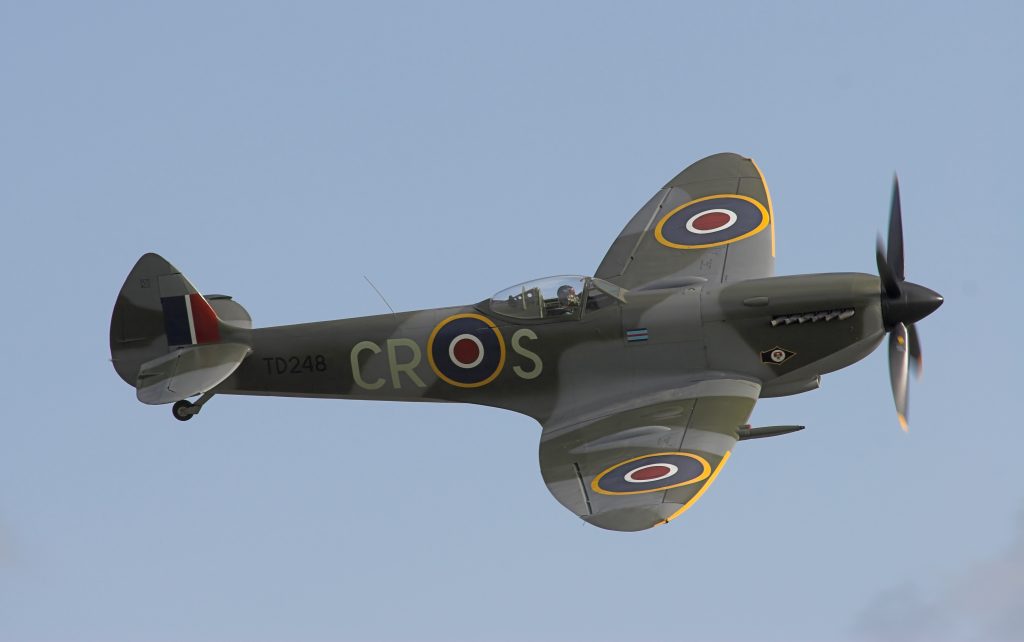
Durante la segunda guerra mundial la Alemania nazi planeaba la invasión de Inglaterra, consideró necesario obtener previamente una superioridad aérea de la Luftwaffe sobre la Royal Air Force (RAF), y durante 4 meses (julio a octubre de 1940), se libró sobre el cielo británico y del Canal de la Mancha la primera gran batalla disputada por entero en el aire y que sería conocida como La Batalla de Inglaterra.
Quizá el avión más conocido de esa batalla por parte del bando aliado fue el Supermarine Spitfire, comúnmente conocido como Spitfire. Se trataba de un caza monoplaza de intercepción que se incorporó a la RAF en 1938, y que no fue retirado hasta 1955 en el Reino Unido y en 1961 en Irlanda, y del que se llegaron a construir 20.351 unidades. El particular diseño del ala elíptica y la equipación de los motores Rolls Royce Merlín y Rolls Royce Griffon le permitieron ser el caza más veloz de su época, alcanzando los 400 kph. Todavía hoy se conservan en funcionamiento una pequeña cantidad y que podemos ver en alguna exhibición aérea.
SUPERMARINE SPITFIRE
During the Second World War and after a series of victories, Germany began preparing the plan to invade Britain. The invasion could only be contemplated after getting full air superiority – The Luftwaffe Air Fleet over the Royal Air Force (RAF).
The Battle of Britain was about to begin (July-October 1940). It was the first big battle fought over the British Channel, where the Supermarine Spitfire played a major role. It was a British single-seat fighter aircraft, which was used by the Royal Air Force and by many other Allied countries in the Second World War. The Spitfire´s thin cross-section elliptical wing allowed it a higher top speed than other contemporary fighters. Its original airframe was designed to be powered by a Rolls-Royce Merlin engine and a Rolls-Royce Griffon, producing 400 kph.
It was perceived by the public as the RAF fighter and 20,351 Sptifires were produced.
When it was retired (1961-Irish Air Corps) and the production was ceased, the remaining examples were preserved and restored. Even today, some of them can be seen on several air exhibitions.